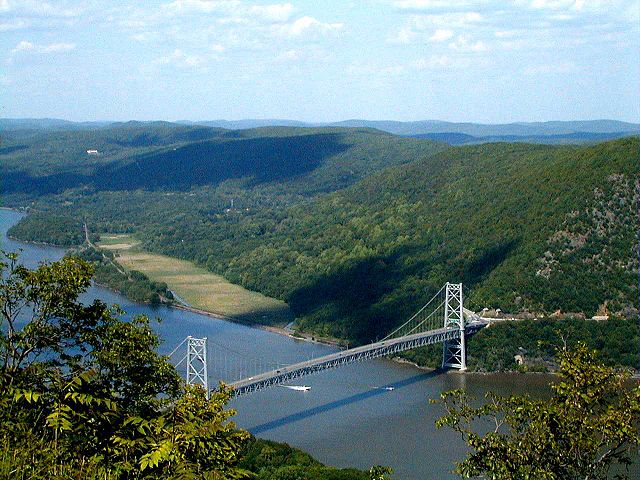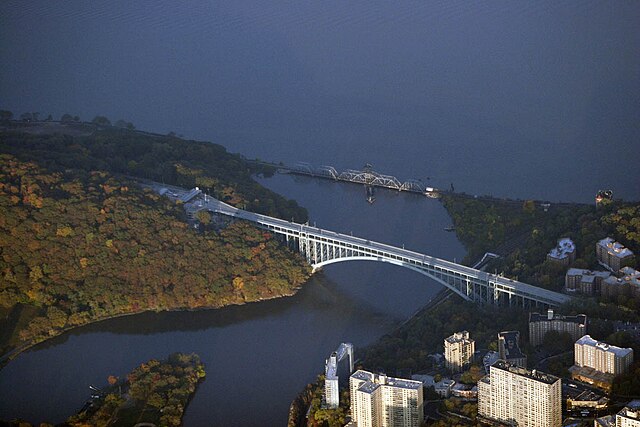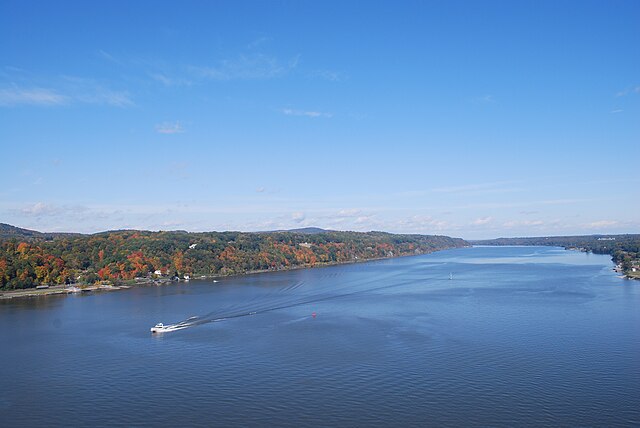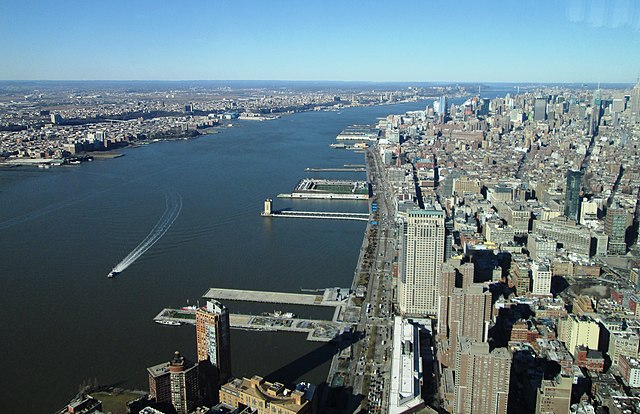Spuyten Duyvil Creek is a short tidal estuary in New York City connecting the Hudson River to the Harlem River Ship Canal and then on to the Harlem River. The confluence of the three water bodies separate the island of Manhattan from the Bronx and the rest of the mainland. Once a distinct, turbulent waterway between the Hudson and Harlem rivers, the creek has been subsumed by the modern ship canal.
The mouth of the Spuyten Duyvil Creek with the Henry Hudson Bridge (foreground) and the railroad's Spuyten Duyvil Bridge in the background
1842 view
What was a southern meander of Spuyten Duyvil Creek is now a bay in Inwood Park.
The Hudson River is a 315-mile (507 km) river that flows from north to south primarily through eastern New York, United States. It originates in the Adirondack Mountains of upstate New York at Henderson Lake in the town of Newcomb, and flows southward through the Hudson Valley to the New York Harbor between New York City and Jersey City, eventually draining into the Atlantic Ocean at Upper New York Bay. The river serves as a physical boundary between the states of New Jersey and New York at its southern end. Farther north, it marks local boundaries between several New York counties. The lower half of the river is a tidal estuary, deeper than the body of water into which it flows, occupying the Hudson Fjord, an inlet that formed during the most recent period of North American glaciation, estimated at 26,000 to 13,300 years ago. Even as far north as the city of Troy, the flow of the river changes direction with the tides.

Bear Mountain Bridge across the Hudson River as seen from Bear Mountain in New York state
The Hudson River flowing out of Henderson Lake in Tahawus
The river from Poughkeepsie, looking north.
The river between Hudson Waterfront in New Jersey (left) and Manhattan (right)







